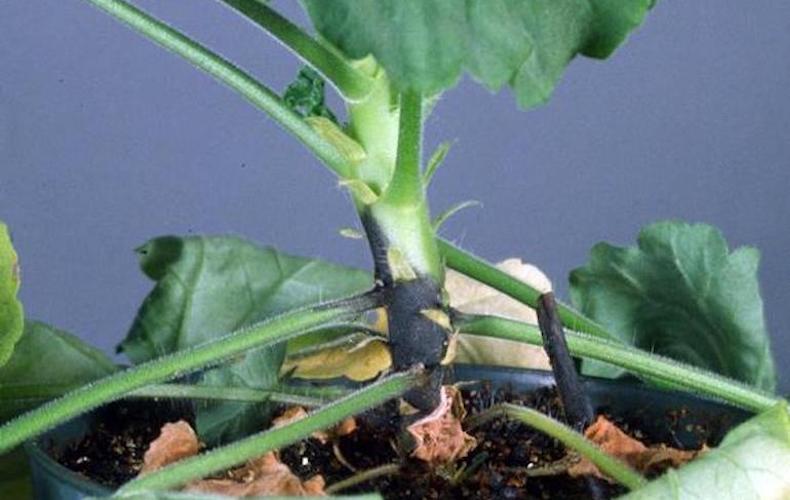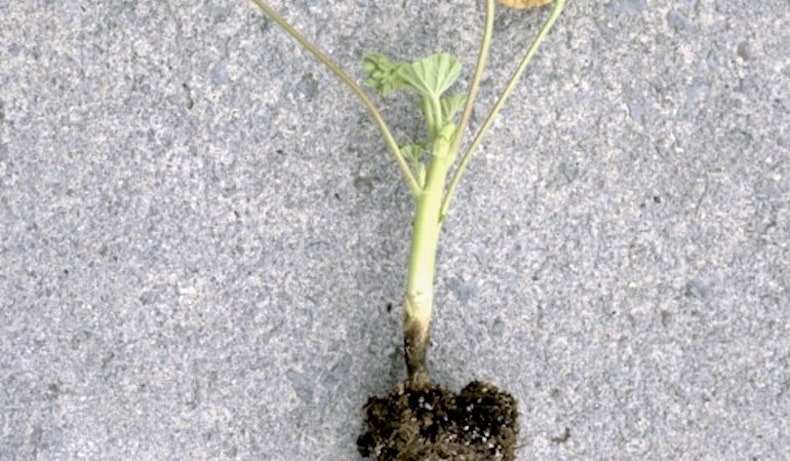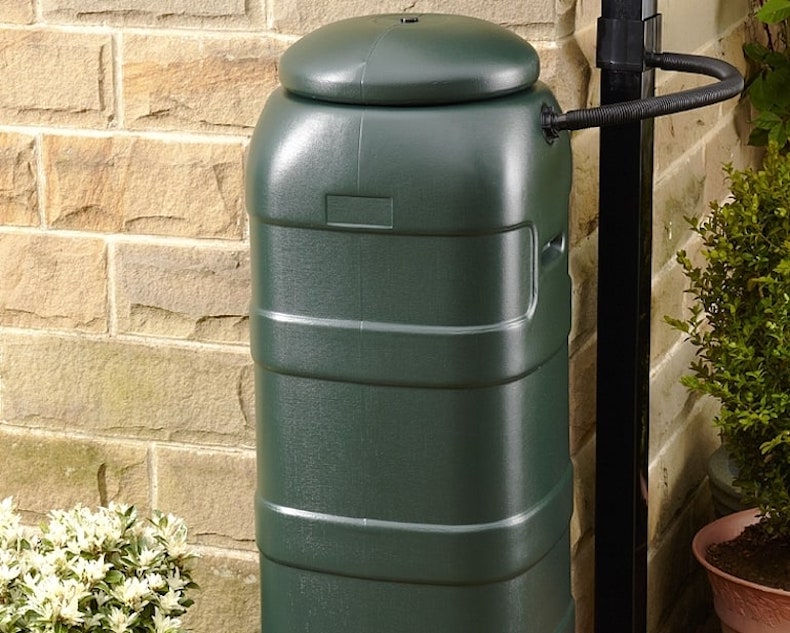Garden diseases - Geranium blackleg

Blackleg can severely damage your geraniums and pelargoniums
Image: Karen Snover-Clift, Cornell University
Blackleg is a nasty fungal infection that wreaks havoc among geraniums and pelargoniums. Once your plants contract it, there’s nothing you can do to treat it. Read on to find out how to minimise the chances of your plants becoming infected and what to do if the worst happens.
What is blackleg?
Blackleg is a Pythium infection – it’s an aggressive fungus which is easily transmitted and rapidly kills plants. Blackleg spreads via unwashed tools and pots and may also lurk in uncovered water butts.
How do I recognise geranium blackleg?

Stem discolouration is an obvious sign of geranium blackleg
Image: Mary Ann Hansen, Virginia Polytechnic Institute and State University
The infection gets its name from the way it destroys plant stems from the bottom up, turning tender stems a dark brown / black colour, causing them to wilt, wither and rot. Despite its specific name, blackleg can also affect the plants’ leaves, forming black spots and patches.
How to prevent geranium blackleg

Invest in a covered water butt to stop infected leaves contaminating your water
Image: Thompson & Morgan
Minimise the chances of blackleg infection by being sure to rake up and dispose of leaves during the autumn – it’s the best way to deny this and many other plant infections the opportunity to overwinter in your garden. Also keep your waterbutt covered to stop infected leaves falling into it.
When pricking out fresh seedlings, use sterilised compost from your local garden centre and, before planting, dip roots in rooting compound – it contains fungicide which will help to protect your plants. Also avoid overwatering which leaves soil waterlogged, creating an ideal environment for microbial and fungal infection.
Remember to check any geraniums or pelargoniums you buy from the garden centre are free of the disease before bringing them home.
How to treat geranium blackleg
If you notice your geraniums or pelargoniums developing signs of blackrot, the best thing to do is to remove infected plants immediately before either burning them or disposing of them with the household rubbish. Don’t put diseased cuttings on the compost heap, or you’ll create a source of infection for the future.
Dispose of soil from infected containers before washing pots, trowels and secateurs with a 10% bleach solution to kill remaining spores.
Other pages you might like
See all pests & diseases guides
Individual guides
Diseases
- Apple scab
- Bacterial canker
- Blossom wilt
- Botrytis
- Brown rot
- Clematis wilt
- Downy mildew
- Fungal disease
- Honey fungus
- Leaf scorch
- Leaf spot
- Leek rust
- Lily disease
- Peach leaf curl
- Pear rust
- Phytophthora root rot
- Potato & tomato blight
- Powdery mildew
- Silver leaf fungus
- Tomato greenback
- Tomato leaf curl
- Tomato stem canker







